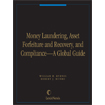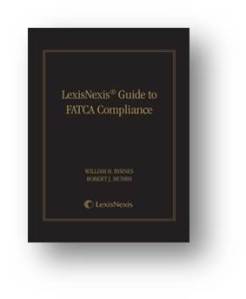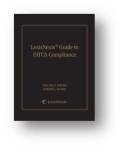For my blogs FATCA subscribers, below I summarize and (quickly) analyze the aspects of Notice 2014-33, published just before 3pm East Coast time on Friday May 2, and provide relevant links.
Treasury released Notice 2014-33 on May 2. Notice 2014-33 provides aspects of temporary relief for five areas of FATCA compliance:
1. 6 month extension (from July 1, 2014 until December 31, 2014) for characterizing as “pre-existing” the obligations (including accounts) held by an entity
2. soft-enforcement transition period 2014 and 2015 for good-faith actors
3. modification to the “standards of knowledge” for withholding agents under §1.1441-7(b)[1] for accounts documented before July 1, 2014
4. revision to the definition of a “reasonable explanation” of foreign status in §1.1471-3(e)(4)(viii)[2]
5. additional guidance for an FFI (or a branch of an FFI, including a disregarded entity owned by an FFI) that is a member of an expanded affiliated group of FFIs to be treated as a limited FFI or limited branch, including the requirement for a limited FFI to register on the FATCA registration website.
1. Six Month Extension To Characterize Entity Accounts As Pre-Existing Obligations
Treasury stated that industry comments indicate that the release dates of the final Forms W-8 (click on the links for analysis of the April 2014 releases of the new W-8IMY and W-8BEN-E) and accompanying instructions present practical problems for both withholding agents and FFIs to implement new account opening procedures beginning on July 1, 2014.
Thus, obligations (including accounts) held by an entity – opened, executed, or issued from July 1, 2014 until December 31, 2014 – may be treated as preexisting obligations by a withholding agent or FFI for purposes of sections 1471 and 1472 (subject to certain modifications described in section IV of Notice 2014-33).
2. Transition Period For Enforcement And Administration Of Compliance
The IRS will regard 2014 and 2015 as a transition period for purposes of its enforcement and administration of the due diligence, reporting, and withholding provisions under chapter 4, as well as the provisions under chapters 3 and 61, and section 3406, to the extent these rules were modified by the temporary coordination regulations.
During this transition period, the IRS will take into account the extent of good faith efforts to comply with the requirements of the chapter 4 regulations and the temporary coordination regulations by
- a participating or deemed-compliant FFI,
- direct reporting NFFE,
- sponsoring entity,
- sponsored FFI,
- sponsored direct reporting NFFE, or
- withholding agent.
The IRS will take into account whether a withholding agent has made reasonable efforts during the transition period to modify its account opening practices and procedures to document the chapter 4 status of payees, apply the standards of knowledge provided in chapter 4, and, in the absence of reliable documentation, apply the presumption rules of §1.1471-3(f).[3]
Additionally, for example, the IRS will consider the good faith efforts of a participating FFI, registered deemed-compliant FFI, or limited FFI to identify and facilitate the registration of each other member of its expanded affiliated group as required for purposes of satisfying the expanded affiliated group requirement under §1.1471-4(e)(1).
The IRS will not regard calendar years 2014 and 2015 as a transition period with respect to the requirements of chapters 3 and 61, and section 3406, that were not modified by the temporary coordination regulations. For example, the IRS will not provide transitional relief with respect to its enforcement regarding a withholding agent’s determinations of the character and source of payments for withholding and reporting purposes.
3. Modification To The Standards Of Knowledge For Withholding Agents Under §1.1441-7(b)[4]
Treasury intends to amend the temporary coordination regulations to provide that a direct account holder will be considered documented pursuant to the requirements of §1.1441-1(e)(4)(ii)(A)[5] prior to July 1, 2014, without regard to whether the withholding agent obtains renewal documentation for the account holder on or after July 1, 2014. Therefore, a withholding agent that has documented a direct account holder prior to July 1, 2014, is not required to apply the new reason to know standards relating to a U.S. telephone number or U.S. place of birth until the withholding agent is notified of a change in circumstances with respect to the account holder’s foreign status other than renewal documentation or reviews documentation for the account holder that contains a U.S. place of birth.
The temporary coordination regulations also provide a transitional rule to allow a withholding agent that has previously documented the foreign status of a direct account holder for chapters 3 and 61 purposes prior to July 1, 2014, to continue to rely on such documentation without regard to whether the withholding agent has a U.S. telephone number or U.S. place of birth for the account holder. The withholding agent would, however, have reason to know that the documentation is unreliable or incorrect if the withholding agent is notified of a change in circumstances with respect to the account holder’s foreign status or the withholding agent reviews documentation for the account holder that contains a U.S. place of birth.
4. Revision Of The Definition Of Reasonable Statement
Commentators have noted that the description of a reasonable explanation of foreign status in the final chapter 4 regulations differs from the description provided in the temporary coordination regulations.
Treasury and the IRS intend to amend the final chapter 4 regulations to adopt the description of a reasonable explanation of foreign status provided in the temporary coordination regulations, which permit an individual to provide a reasonable explanation that is not limited to an explanation meeting the requirements of §1.1471-3(e)(4)(viii)(A) through (D).
(viii) Reasonable explanation supporting claim of foreign status. A reasonable explanation supporting a claim of foreign status for an individual means a written statement prepared by the individual (or the individual’s completion of a checklist provided by the withholding agent), stating that the individual meets one of the requirements of paragraphs (e)(4)(viii)(A) through (D).
(A) The individual certifies that he or she—
(1) Is a student at a U.S. educational institution and holds the appropriate visa;
(2) Is a teacher, trainee, or intern at a U.S. educational institution or a participant in an educational or cultural exchange visitor program, and holds the appropriate visa;
(3) Is a foreign individual assigned to a diplomatic post or a position in a consulate, embassy, or international organization in the United States; or
(4) Is a spouse or unmarried child under the age of 21 years of one of the persons described in paragraphs (e)(4)(viii)(A) through (C) of this section;
(B) The individual provides information demonstrating that he or she has not met the substantial presence test set forth in § 301.7701(b)-1(c) of this chapter (for example, a written statement indicating the number of days present in the United States during the 3-year period that includes the current year);
(C) The individual certifies that he or she meets the closer connection exception described in § 301.7701(b)-2, states the country to which the individual has a closer connection, and demonstrates how that closer connection has been established; or
(D) With respect a payment entitled to a reduced rate of tax under a U.S. income tax treaty, the individual certifies that he or she is treated as a resident of a country other than the United States and is not treated as a U.S. resident or U.S. citizen for purposes of that income tax treaty.
5.1 Limited FFIs And Limited Branches
While Treasury stands ready and willing to negotiate IGAs based on the published models, commentators have expressed practical concerns about the status of FFIs and branches of FFIs in jurisdictions that are slow to engage in IGA negotiations and that have legal restrictions impeding their ability to comply with FATCA, including the conditions for limited FFI or limited branch status under the chapter 4 regulations. Specifically, comments have noted that the restrictions imposed by the final chapter 4 regulations on a limited branch or limited FFI on opening any account that it is required to treat as a U.S. account or as held by a nonparticipating FFI hinders the ability of an FFI to agree to the conditions of limited status due, for example, to requirements under local law to provide individual residents with access to banking services or to the business needs of the FFI to secure funding from another FFI in the same jurisdiction with similar impediments to complying with the requirements of FATCA.
Treasury and the IRS intend to amend the final chapter 4 regulations to permit a limited FFI or limited branch to open U.S. accounts for persons resident in the jurisdiction where the limited branch or limited FFI is located, and accounts for nonparticipating FFIs that are resident in that jurisdiction, provided that the limited FFI or limited branch does not solicit U.S. accounts from persons not resident in, or accounts held by nonparticipating FFIs that are not established in, the jurisdiction where the FFI (or branch) is located and the FFI (or branch) is not used by another FFI in its expanded affiliated group to circumvent the obligations of such other FFI under section 1471. This modification is consistent with the treatment of related entities and branches provided in the model IGAs.
5.2 Registration of Limited FFIs
Commentators have also stated that certain jurisdictions are explicitly prohibiting an FFI resident in, or organized under the laws of, the jurisdiction from registering with the IRS and agreeing to any status, including status as a limited FFI, regardless of whether the FFI would otherwise be able to comply with the requirements of limited FFI status.
Treasury and the IRS intend to amend the final chapter 4 regulations to provide that, if an FFI is prohibited under local law from registering as a limited FFI, the prohibition will not prevent the members of its expanded affiliated group from obtaining statuses as participating FFIs or registered deemed-compliant FFIs if the first-mentioned FFI is identified as a limited FFI on the FATCA registration website by a member of the expanded affiliated group that is a U.S. financial institution or an FFI seeking status as a participating FFI (including a reporting Model 2 FFI) or reporting Model 1 FFI.
In order to identify the limited FFI, the member of the expanded affiliated group will be required to register as a Lead FI with respect to the limited FFI and provide the limited FFI’s information in Part II of the FATCA registration website. If the Lead FI is prohibited from identifying the limited FFI by its legal name, it will be sufficient if the Lead FI uses the term “Limited FFI” in place of its name and indicates the FFI’s jurisdiction of residence or organization.
By identifying a limited FFI in the FATCA registration website, the Lead FI is confirming that:
(1) the FFI made a representation to the Lead FI that it will meet the conditions for limited FFI status,
(2) the FFI will notify the Lead FI within 30 days of the date that such FFI ceases to be a limited FFI because it either can no longer comply with the requirements for limited status or failed to comply with these requirements, or that the limited FFI can comply with the requirements of a participating FFI or deemed-compliant FFI and will separately register, to the extent required, to obtain its applicable chapter 4 status, and
(3) the Lead FI, if it receives such notification or knows that the limited FFI has not complied with the conditions for limited FFI status or that the limited FFI can comply with the requirements of a participating FFI or deemed-compliant FFI, will, within 90 days of such notification or acquiring such knowledge, update the information on the FATCA registration website accordingly and will no longer be required to act as a Lead FI for the FFI.
In the case in which the FFI can no longer comply or failed to comply with the requirements of limited FFI status, the Lead FI must delete the FFI from Part II of the FATCA registration website and must maintain a record of the date on which the FFI ceased to be a limited FFI and the circumstances of the limited FFI’s non-compliance that will be available to the IRS upon request.
For 600 pages of substantive expert analysis by 50 leading FATCA professionals and in-house compliance officers, see Guide to FATCA Compliance
—-Footnotes—–
[1] §1.1441-7 (b) Standards of knowledge—
(1) In general. A withholding agent must withhold at the full 30-percent rate under section 1441, 1442, or 1443(a) or at the full 4-percent rate under section 1443(b) if it has actual knowledge or reason to know that a claim of U.S. status or of a reduced rate of withholding under section 1441, 1442, or 1443 is unreliable or incorrect. A withholding agent shall be liable for tax, interest, and penalties to the extent provided under sections 1461 and 1463 and the regulations under those sections if it fails to withhold the correct amount despite its actual knowledge or reason to know the amount required to be withheld.
[2] § 1.1471–3(e) Identification of payee
(4) Reason to know. A withholding agent shall be considered to have reason to know that a claim of chapter 4 status is unreliable or incorrect if its knowledge of relevant facts or statements contained in the withholding certificates or other documentation is such that a reasonably prudent person in the position of the withholding agent would question the claims made. For accounts opened on or after January 1, 2014, a withholding agent will also be considered to have reason to know that a claim of chapter 4 status is unreliable or incorrect if any information contained in its account opening files or other customer account files, including documentation collected for AML due diligence purposes, conflicts with the payee’s claim of chapter 4 status.
(viii) Reasonable explanation supporting claim of foreign status. A reasonable explanation supporting a claim of foreign status for an individual means a written statement prepared by the individual (or the individual’s completion of a checklist provided by the withholding agent), stating that the individual meets one of the requirements of paragraphs (e)(4)(viii)(A) through (D).
[3] (f) Presumptions regarding chapter 4 status of the person receiving the payment in the absence of documentation—(2) Presumptions of classification as an individual or entity—
(i) In general. A withholding agent that cannot reliably associate a payment with a valid withholding certificate, or that has received valid documentary evidence, as described in paragraph (c)(5) of this section, but cannot determine a person’s status as an individual or an entity from the documentary evidence, must presume that the person is an individual if the person appears to be an individual (for example, based on the person’s name or information in the customer file). If the person does not appear to be an individual, then the person shall be presumed to be an entity. In the absence of reliable documentation, a withholding agent must treat a person that is presumed to be an entity as a trust or estate if the person appears to be a trust or estate (for example, based on the person’s name or information in the customer file). In addition, a withholding agent must treat a person that is presumed to be a trust, or a person that is known to be a trust but for which the withholding agent cannot determine the type of trust, as a grantor trust if the withholding agent knows that the settlor of the trust is a U.S. person, and otherwise as a simple trust. In the absence of reliable indications that the entity is a trust or estate, the withholding agent must presume the person is a corporation if it can be treated …. If the withholding agent cannot treat the person as a corporation … then the person must be presumed to be a partnership.
[4] §1.1441-7 (b) Standards of knowledge—
(1) In general. A withholding agent must withhold at the full 30-percent rate … if it has actual knowledge or reason to know that a claim of U.S. status or of a reduced rate of withholding … is unreliable or incorrect. A withholding agent shall be liable for tax, interest, and penalties to the extent provided … if it fails to withhold the correct amount despite its actual knowledge or reason to know the amount required to be withheld.
[5] §1.1441-1(e)(4)(ii) Period of validity—
(A) Three-year period. A withholding certificate … shall remain valid until the earlier of the last day of the third calendar year following the year in which the withholding certificate is signed or the day that a change in circumstances occurs that makes any information on the certificate incorrect.
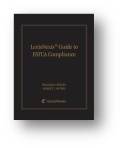
The LexisNexis® Guide to FATCA Compliance (2nd Edition) comprises 34 Chapters grouped in three parts: compliance program (Chapters 1–4), analysis of FATCA regulations (Chapters 5–16) and analysis of Intergovernmental Agreements (IGAs) and local law compliance requirements (Chapters 17–34), including information exchange protocols and systems. The 34 chapters include many practical examples to assist a compliance officer contextualize the regulations, IGA provisions, and national rules enacted pursuant to an IGA. Chapters include by example an in-depth analysis of the categorization of trusts pursuant to the Regulations and IGAs, operational specificity of the mechanisms of information capture, management and exchange by firms and between countries, and insights as to the application of FATCA and the IGAs for BRIC and European country chapters.
If you are interested in discussing the Master or Doctorate degree in the areas of financial services or international taxation, please contact me https://profwilliambyrnes.com/online-tax-degree/
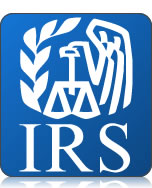 corruption index. The complete information system invoked by the Foreign Account Tax Compliance Act (FATCA) encourages, even prolongs, the bad behavior of black hat governments by providing fuel (financial information) to feed the fire of corruption and suppression of rivals. Professor Byrnes recommends that the United States leverage a “carrot-stick” policy tool to incentivize bad actors to adopt best tax administration practices. Article download at https://ssrn.com/abstract=2916444
corruption index. The complete information system invoked by the Foreign Account Tax Compliance Act (FATCA) encourages, even prolongs, the bad behavior of black hat governments by providing fuel (financial information) to feed the fire of corruption and suppression of rivals. Professor Byrnes recommends that the United States leverage a “carrot-stick” policy tool to incentivize bad actors to adopt best tax administration practices. Article download at https://ssrn.com/abstract=2916444





